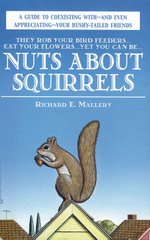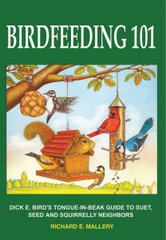Is Your House A Squirrel Magnet? Learn Professional Squirrel-Prevention Techniques
A professional squirrel-removal technician tells us how to deal with furballs:
As a professional squirrel-removal technician, I evict squirrels from hundreds of homes each year. This allows me to see first hand how squirrels manage to enter homes/attics and also why they seek out certain types of houses. If you’ve had squirrels in the attic before there is probably a very specific reason as to why they chose your home. This article will illustrate why squirrels are attracted to certain homes and give you tips on removing the conditions that make your home attractive to these furry little rodents!
Are You Attracting Squirrels?
Are you unknowingly attracting squirrels to your backyard? You could be if you have any of the following.
Bird Feeders - Bird feeders will often attract squirrels to your yard. The more squirrels in your yard and near your home the more likely it is that they will damage your home. Squirrels are attracted to bird feeders due to the seeds that fall to the ground below. Use specialized feeders that don’t allow the seed to fall to the ground or place feeders far away from the house.
Trash Barrels – A little-known fact is that urban squirrels eat trash. Squirrels are opportunistic feeders and will eat just about anything. Un-secured garbage cans allow squirrels to dine on your trash whenever they choose. Keep the lids on your trashcans tight and use bungee cords to prevent the lids from being knocked off.
Gutters – The gutters on your home act as a catch basin for leaves and nuts. Homes that are surrounded by oak trees often have gutters full of acorns. This creates a fine-dining scenario for squirrels and will certainly lure them to your home. Clean your gutters twice a year to prevent this from happening.
Access
The number one factor that makes a house prone to squirrel problems is open entry. The following conditions make it very easy for squirrels to access your roof.
Overhanging Tree Limbs – Squirrels can jump as far as 15 feet from a branch to land on your roof. Trim long branches back to prevent this from happening. Keep in mind that even the branches that are well above your roof should be trimmed.
Bushes – Large bushes that grow around the perimeter of one-story homes allow squirrels to climb the bushes and jump onto the roof. Keep these bushes trimmed to a height that is four feet below the roofline. This will prevent squirrels from jumping from the tops of the bushes onto your roof.
Preventive Maintenance
In order for a squirrel to chew its way into your attic it needs a vulnerable area or a weak spot to start with. These are usually slightly rotted areas on the corners of the house or older attic vents on the ends of your home. To prevent squirrels from using these areas you should replace rotted wood and screen your attic vents.
Squirrels cause hundreds of thousands of dollars worth of damage each year to homes. Usually, if you remove the features that make your home attractive to these intelligent and determined critters, you’ll find they quickly become less bothersome. Follow the professional tips listed above and you should be able to prevent a squirrel infestation in your home and attic!
Subscribe to:
Post Comments (Atom)










No comments:
Post a Comment